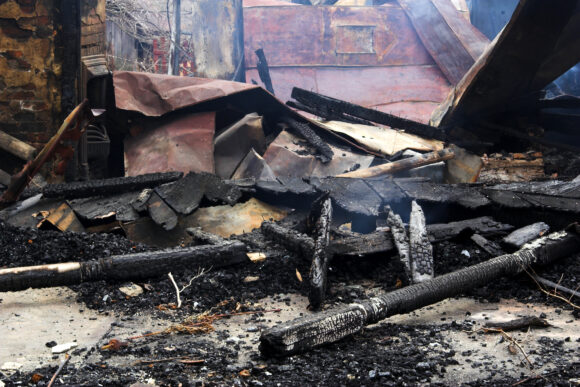New York’s highest court reversed a $4.5 million judgment against an insurer that denied a fire damage claim by the owner of a vacant commercial building because the owner had not installed an automatic sprinkler system required by the policy.
The Court of Appeals ruled Thursday that both the New York Supreme Court and the Appellate Division erred when they decided that the exclusion was unenforceable because it was added to the policy by mutual mistake. The civil complaint against Seneca Insurance makes no mention of a mistake and in fact says that the owner of the building had complied with all terms of the policy, the unanimous opinion says.
“In light of our ‘heavy presumption that a deliberately prepared and executed written instrument manifests the true intention of the parties,’ defendant had every reason to rely on the original complaint, which provided no indication that the written policy failed to reflect the parties’ intent,” the opinion says.

The dispute stems from fire damage to a building in Queens owned by34-06 73 LLC. Mohammad Malik, the sole owner of the corporation, says he told his insurance broker to buy a policy that did not require any fire-suppression equipment.
But Malik didn’t read the policy. The contract included a Protective Safeguards Endorsement that required the property owner to maintain an automatic sprinkler system.
“The owner of the property owns hundreds of millions of dollars in real estate and it was left in the hands of the broker,” D’Antonio said.
A fire caused extensive damage four months after the policy took effect. Malik filed a claim but Seneca denied it, citing the safeguards endorsement.
During the trial, testimony from Seneca’s vice president of underwriting and documents introduced into evidence supported the plaintiff’s contention that the protective safeguards endorsement was added to the policy by “mutual mistake. D’Antonio said Seneca did not issue any credits for the presence of fire-suppression equipment and charged premiums as if the building had none. What’s more, Malik’s broker inspected the building and did not cancel the policy despite the missing sprinklers.
In December 2019, a New York jury entered a verdict in plaintiffs’ favor in the amount of $4,541,957.73. The First Department of the Appellate Division affirmed in January 2021.
The Court of Appeals, however, said that the judgment must be reversed because nothing in the civil complaint indicated that the endorsement was added by mistake.
“Defendant maintained that the complaint alleged only nonperformance and contained no indication that the contract failed to reflect the parties’ intent,” the opinion says.
The high court said by the time the case was tried, a statute of limitations prevented the plaintiff from pleading for “reformation,” meaning to change the terms of the policy to match what the plaintiff contended was the parties’ true intent. Section 203(f) requires plaintiffs in a breach of contract claim to give “notice of the transactions, occurrences, or series of transactions or occurrences,” the opinion says.
D’Antonio said he hopes to revive the lawsuit by filing a motion to set aside the jury verdict. He said the trial court never ruled on motions that Seneca was estopped from arguing that the protective safeguards endorsement was in force because of the broker’s inspection and that it had waived that defense when it failed to enforce the insurance contract by requiring the owner to install fire sprinklers.
The photo above is for illustrative purposes only.
Was this article valuable?
Here are more articles you may enjoy.


 Instacart to Pay $60 Million in FTC Consumer Protection Case
Instacart to Pay $60 Million in FTC Consumer Protection Case  Jump Trading Faces $4 Billion Terraform Administrator Suit
Jump Trading Faces $4 Billion Terraform Administrator Suit  Cat Bonds Linked to Wildfires Lose ‘Once Untouchable’ Status
Cat Bonds Linked to Wildfires Lose ‘Once Untouchable’ Status  Waymo to Update Software Across Fleet After Major Power Failure
Waymo to Update Software Across Fleet After Major Power Failure 